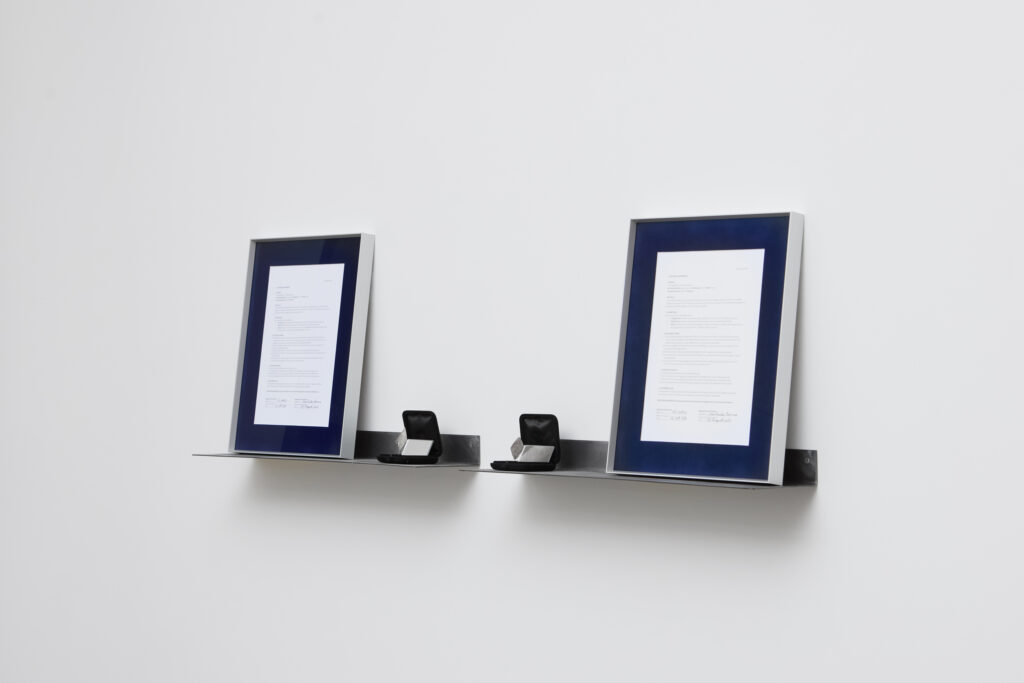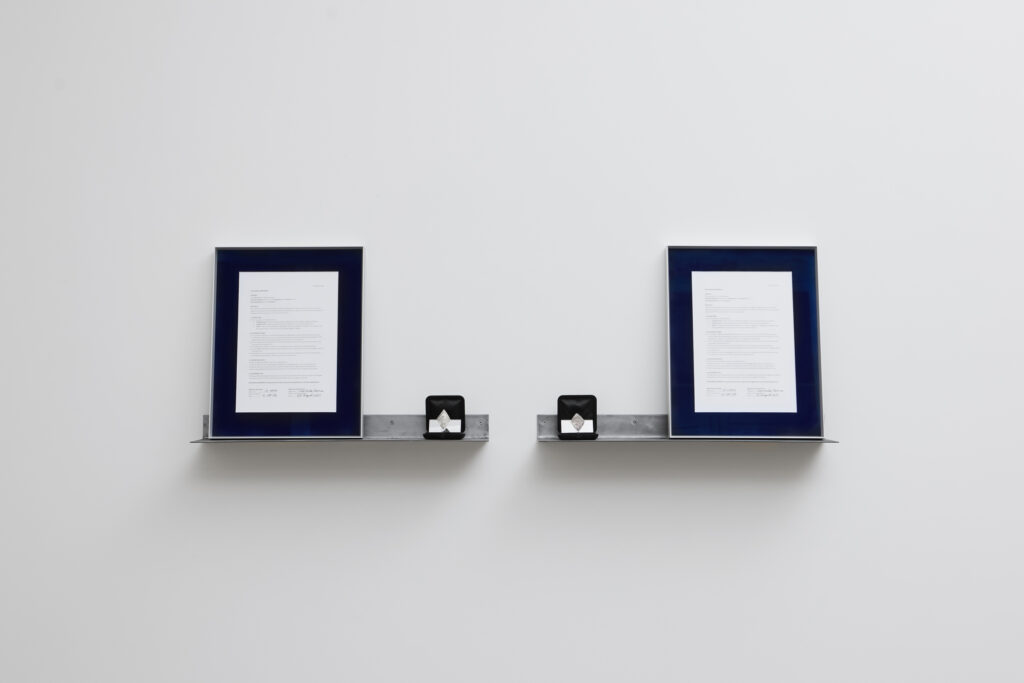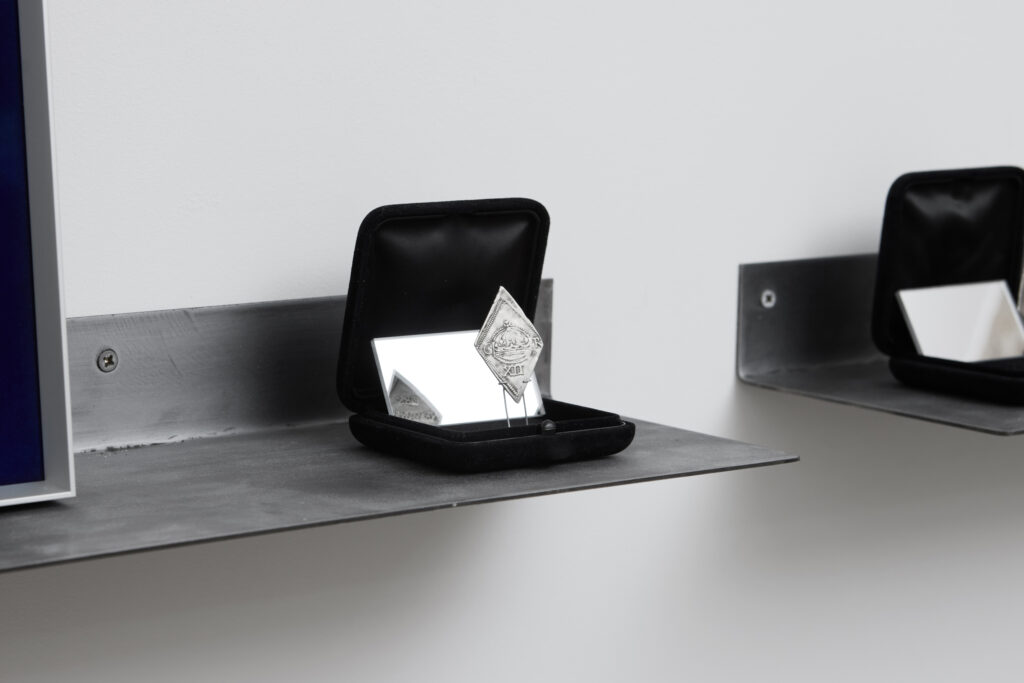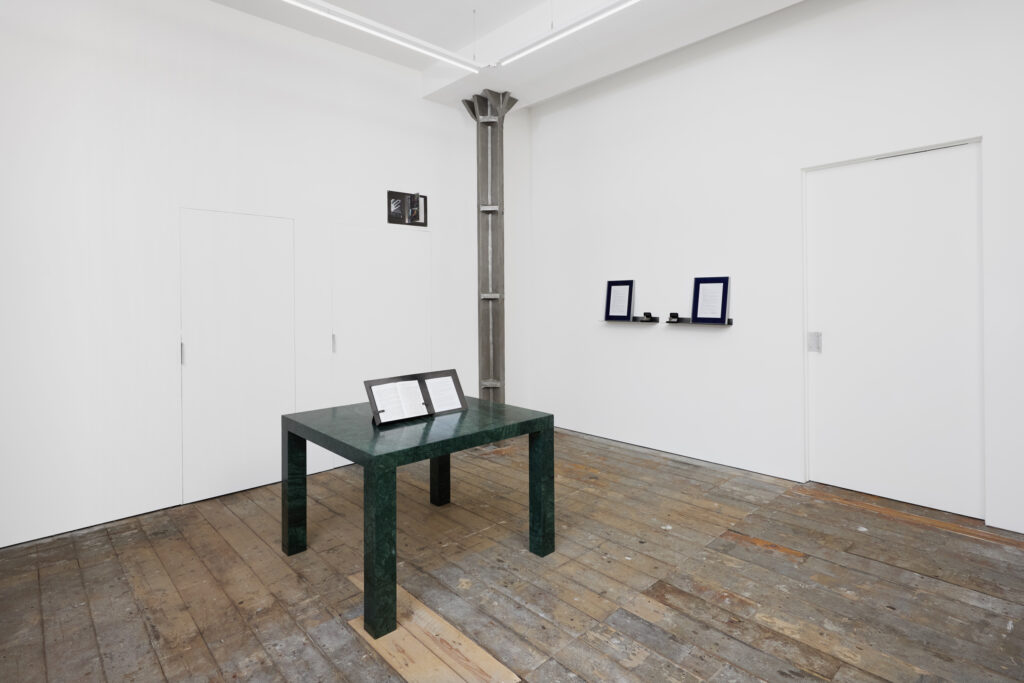Exchange, 2025
Transaction: One original shilling from 1645, minted in Newark (England) for a replica of this coin. Two silver coins, two jewellery boxes, two contracts and two steel shelves
Installation: variable
Contracts: 40.5 x 30.5 (x 2)
Installation views from “A CRIME, A CONFESSION AND A TRADE” at Nicoletti (London, 2025)
“Exchange” is the transaction of an original historical coin from 1645, minted in Newark during the English Civil war and its replica between the artist and a collector. At first it sounds like a bad deal for the collector. To exchange an original for its replica is something that only a fool would do. If you look though the artist’s perspective it isn’t really a smart move either. Although the artist gets the original coin as a result of the transaction – and it’s worth noting that the genesis of the work was moved by the desire to poses one of these original coins, the artist also becomes a collector – he, in fact, loses money if we consider that he had to pay for the production of the replica and, on top of that, the artist is not getting paid for their labour in producing (conceptually and physically) this work. The last agent of this transaction, which is not necessary, per se, is the figure of the gallerist/gallery. The gallery can facilitate the transaction, finding a client and selling this work to the collector – and it’s not an easy idea to sell – and in return they don’t get anything but to help to realize the work. Actually, they might also lose money if they are paying for the production costs of the display of the coins and contracts.
What this shows is that this work is pure expenditure. Referring back to Georges Bataille’s use of the term, it challenges traditional economic theories that are based on production, utility, and rational accumulation. Instead, what is being proposed, or the moving engine of this “Exchange” is pure and irrational desire.
This work might be a bad deal for everyone.



